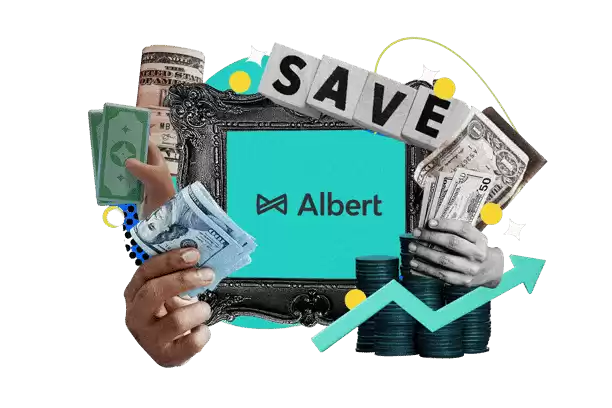It’s 2019. The millennial market is one of the most sought after among large corporations and multinational conglomerates. Millennials are entering the age of buying homes and starting families. But there is one thing that is seriously hampering them: bad credit.
According to The Phenix Group, an entire generation is struggling at an age when many of their parents flourished. It’s so bad that some industries are failing and they blame the millennial generation for killing them.
Take for example the casual dining industries. A generation ago, these kinds of restaurants were thriving and were popping up all over the country. Chains like Ruby Tuesday and TGI Friday’s were showing signs of steady growth. Now you see these restaurants shuttered in major US cities. This is at least in part because millennials are shying away from eating out which is more costly and instead of cooking at home more often than their parents did.
It’s 2019 and once-popular businesses and flourishing industries are shutting their doors. It almost sounds like a dystopian vision of the future, doesn’t it? But what brought us to this point?
To understand the answer to that question (or at least one of the answers to it) you would have to understand the current state of credit and debt among millennials.
Unhealthy Debt
One thing that is sure to give someone of any generation pause about spending money is an already unhealthy amount of personal debt. The millennial generation was doing well about a decade ago. It looked like they were going to be responsible for their situation and stay away from copious amounts of credit card debt.
The “situation” just cited refers to the fact that millennials are not making as much money as the generation Xers were at their age. Federal Reserve records show that millennials are making 20% less money than generation Xers were at a comparable age.
It’s a “sad but true” situation but that was the reality for millennials a decade ago and it still is to a certain degree. But they seemed to be taking this news gracefully and responsibly.
Records also show that in 2010, less than half of millennials in their 20’s even owned a credit card. From 2008 to 2012, it appeared as though millennials got the message and we’re not going to make bad decisions with what little they had. That has changed in recent years.
It seems that the current generation couldn’t hold out against the many flashy offers on TV and credit cards mailed to their door. Now, more than half of all millennials own a credit card and even worse, 8% of this generation has delinquent credit debt.
Unhealthy credit debt is crippling the millennial generation and it is not the only player in this cruel theater.
Student Loan Debt
The millennial generation has either recently graduated from college or have been graduates for about a decade. Think about how much money is going into student loans with an entire generation at the age of higher education. The numbers are pretty staggering.
Student loan debt is near the 1.5 trillion dollar mark, the average amount of student loan debt that a single student is responsible for in 2019 is $31,172 and the average monthly student loan payment is nearly $400. That can put a damper on any recent college grad’s prospects of getting out of debt.
Stated by Experian, student loan debt has ballooned. In the first quarter of 2019 total student loan debt in the US rose by $29 billion when in 2018, it rose by a total of $79 billion. That’s nearly half the total rise it saw last year in just the first quarter of this year alone.
Part of this has to do with the rising cost of higher education. It is estimated that it costs double for millennials to attend college than it did for their parents. And these numbers are not based on expensive private universities. These are modest public universities we are talking about!
Couple this statistic with the fact that household average income in the US has only gone up (since the ’70s) by a paltry 28% and you have more and more young students needing to take out student loans to pay for college.
This is all only considering the timeframe of entering college and studying. There is troubling news for millennials after they graduate. Millennials account for nearly $400 billion in student loan debt and generally have less earning power when they graduate than their parents did when they got comparable degrees.
The Shrinking of the American Dream
The baby boomer generation, perhaps more than any other generation, saw the American Dream as it was advertised. It was a fatted calf ripe for the feasting. They experienced something economists call economic mobility.
Economic mobility is the ability to earn more and live better than the previous generation. During the baby boomers’ hay-day, they encountered better access to higher education, lower costs for higher education, emerging industries, and a robust economy.
Economists have calculated that 92% of the baby boomer generation was able to make 50% more than their parents. That economic mobility number has shrunk to 50% for the current generation.
But why should this be?
The US economy is currently growing. True, but it is growing at a slower rate compared to the baby boomers and even X generation. Not only that the distribution of wealth is also more uneven.
For example:
None of the wealth generated by our currently sluggishly growing economy is going into making higher education more affordable. Nor is it going into making housing or healthcare more affordable. The distribution of wealth is uneven as we see the CEO pay rate gap widening between executives and their employees.
Stated by Ladders, millennials are just not making as much as their parents. On average, generation Xers could expect an income boost of about 30% between the ages of 30 and 34 which was an increase in income at this age compared to their previous generation. That number is also ebbing.
Today, millennials in their early 30’s can expect only a 26% increase in pay. It would appear that the fatted calf is experiencing some emaciation.
Through the Lens of Millennial Credit
So what does all of this have to do with credit delinquency?
When you combine less earning power, slower economic mobility and the rising price of higher education and student loan debt, you get an entire generation becoming swallowed in debt – unable to earn what they need to climb out of it and becoming dependent on the money they don’t have.
The fact is that credit card debt is among the worst kinds of debt you can get yourself into with an average interest rate of 17%.
Millennials also came up in a time of big corporate bailouts, experienced miseducation (or at least were detrimentally influenced) of sorts in terms of finances and were encouraged to take out student loans in the guise of “financial aid.” There was no prevalent educational presence teaching them about credit and the difference between healthy and unhealthy debt.
It’s 2019 and all of this amounts to an uphill battle against credit delinquency for millennials – a battle that they have been ill-prepared for from the start.
- Get spotted up to $250 without fees
- Join 10+ million people using the finance super app
- Banking with instant discounts on gas, food delivery, groceries and more
- Start investing, saving, and budgeting for free









